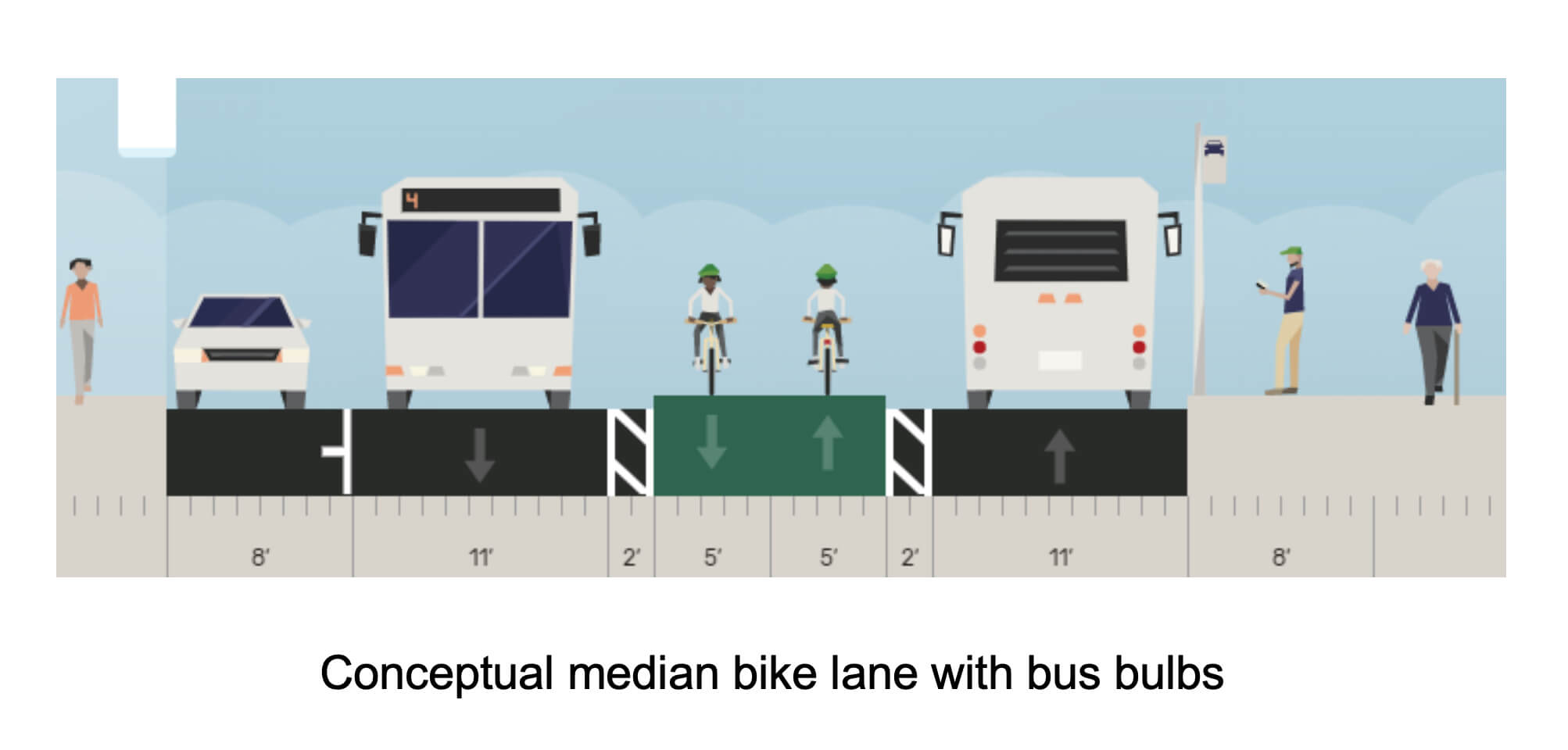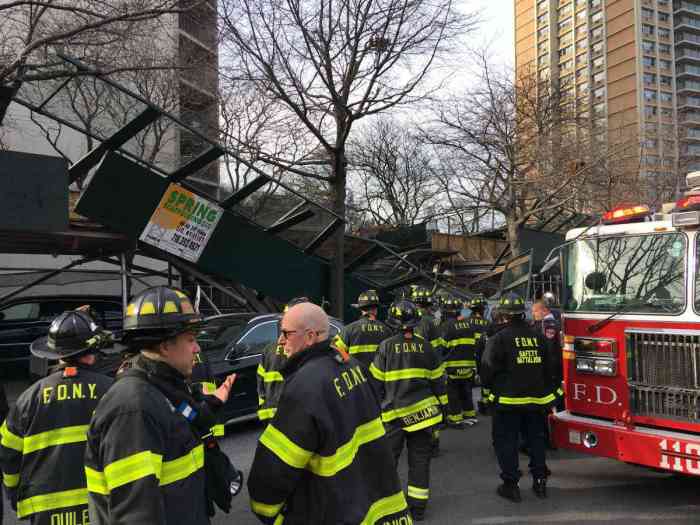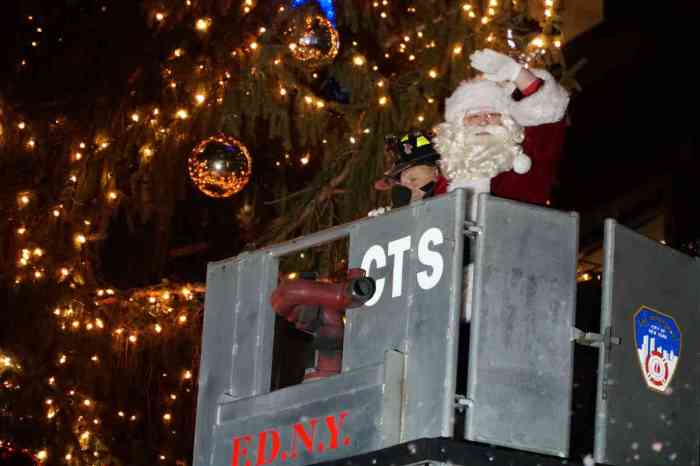City transit gurus recently revealed more information about the upcoming Downtown Brooklyn busway, which officials plan to start work on this summer.
The busway will stretch for 0.4 miles down Smith and Jay Streets — between Livingston and Tillary streets, and will largely close off the five-block roadway to cars, according to the Department of Transportation’s plan.
Only buses, trucks, and bicycles will be allowed to drive through the commercial corridor between 7 am and 7 pm on weekdays, according to the agency.
Car drivers will still have local access to Jay Street, via the three cross streets on Willoughby Street and the MetroTech Roadway underpass coming from the east, along with a reconfigured Johnson Street from the west — but will have to get off the thoroughfare again at the next available exit, according to two presentations the agency gave to a group of local stakeholders known as the Community Advisory Board on July 2 and 23.
The regulations will also be in effect for taxis and ride-share services, which will have to pick up passengers by getting onto Jay Street via the side streets.
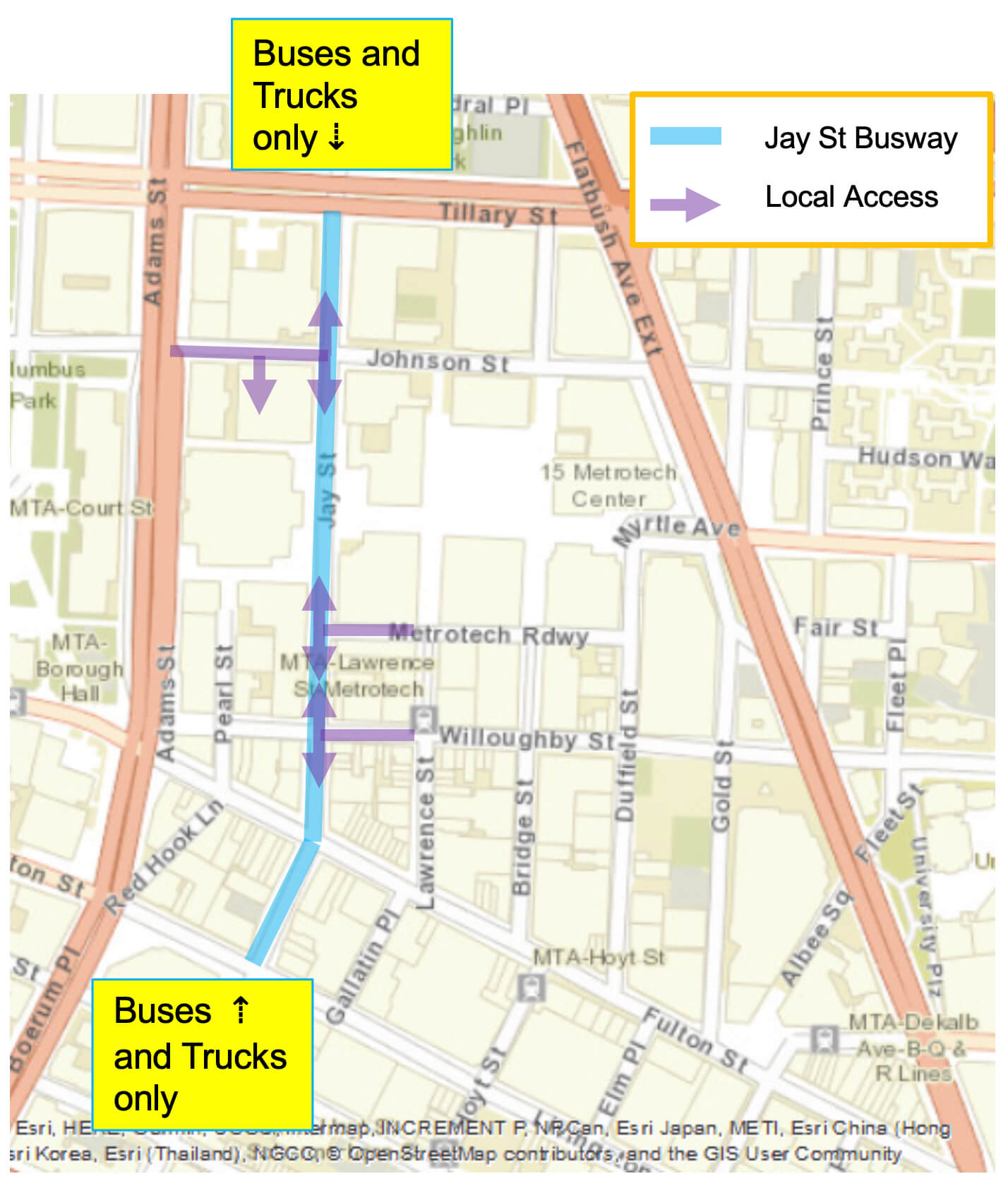
The Jay Street busway is one of five around the city Mayor Bill de Blasio unveiled in June. Hizzoner originally said the Downtown stretch would go live in August, but on Thursday DOT spokeswoman Lolita Avila would only say that work on the Brooklyn busway will “begin this summer.”
The current plan is one block longer than de Blasio’s original proposal, which went from Tillary Street to only as far as Fulton Street.
The five new busways follow a popular pilot on Manhattan’s 14th Street in 2019 and Brooklyn’s original busway on the Fulton Mall, which dates back to the 1980s. The Manhattan busway increased weekday ridership by 14 percent in January of this year compared to the same time in 2018, and allowed buses to go about three minutes faster, according to DOT data.
The agency also plans to flip the direction of one-way Johnson Street to allow local access to Jay Street from the west, while adding bike lanes — one painted green and protected by a row of plastic flappers heading east, and the other sharing the lane with cars going west.
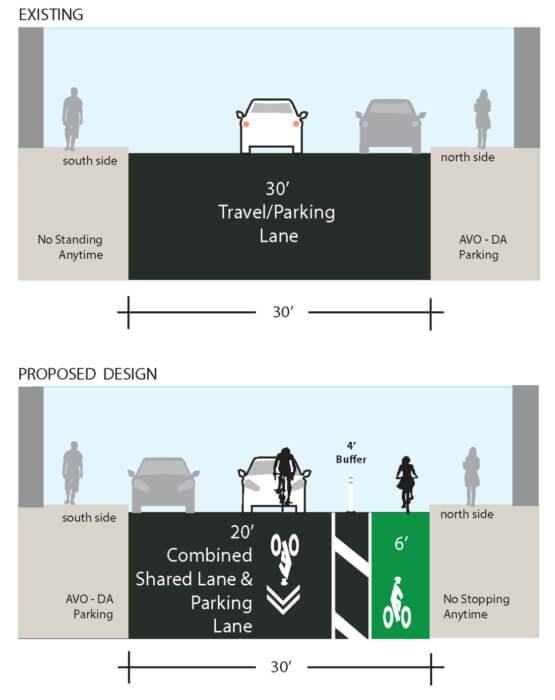
Signs and traffic enforcement agents will divert drivers at each end of the busway, advising motorists to proceed onto Adams Street or Flatbush Avenue, which can handle far more vehicles, according to the street planners.
DOT proposed the restrictions to be in effect during the week to clear the way for the seven bus lines that carry 46,000 straphangers along the roadway every weekday.
Jay Street has historically been a heavily-congested bottleneck, but buses suffer in particular with average speeds dropping to as low as 3.4 miles-per-hour at midday during the week, according to DOT figures. Meanwhile, some two-thirds of traffic only use the commercial corridor as a throughway during morning and evening peak hours, the agency found.
The stretch, which is home to businesses, schools, government offices, and courthouses, is also plagued by rampant placard abuse and double-parking.
The agency found that two out of three parked vehicles displayed some sort of permit, but that 35 percent of those were phony, including non-official permits, letters, or safety vests from various agencies — an issue that has drawn the ire of anti-corruption advocates.
The busway will make it easier for the agency to crack down on parking scofflaws, according to a factsheet DOT posted online, despite recent cuts to agency’s and the Police Department’s placard enforcement units.
“This pilot provides an opportunity for a coordinated effort to enforce illegal placard parking, which takes up valuable curb space and results in double parking,” the sheet reads.
Once installed, DOT will monitor and evaluate the success of the Jay Street busway during a year-long pilot, and take feedback from the advisory board and the public, before deciding on whether to make it permanent, like officials did in Manhattan in June.
The agency is also working on painting new protected bike lanes along Smith Street from Fulton to State streets this summer.
In the July 23 presentation to stakeholders, DOT officials mused that they might install bus islands, extend the sidewalk at stops to create so-called “bus bulbs,” or move the bike lane to the road median to lessen conflict between buses, straphangers, and bikes.
